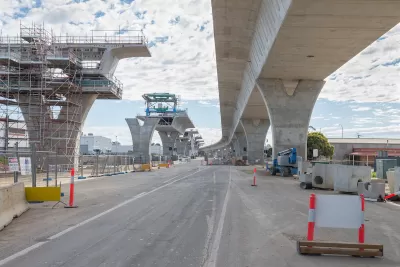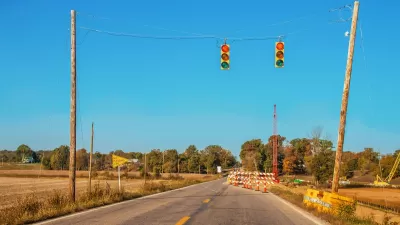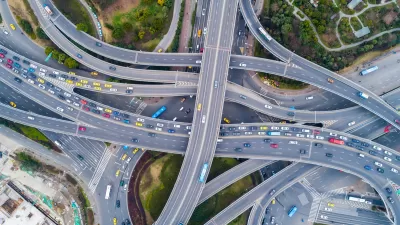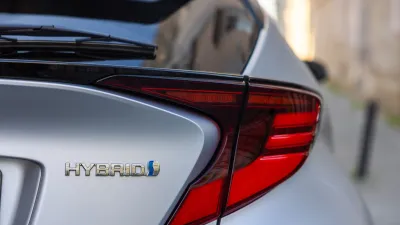With so much funding going to highway construction and expansion, the 2021 law could add 69 million metric tons of carbon to the atmosphere in the next two decades.

An analysis by Transportation for America reveals that the 2021 infrastructure law could ultimately add 69 million metric tons of carbon dioxide to the atmosphere by 2040.
Dan Zukowski describes the study in Smart Cities Dive, writing that according to T4A policy associate, Corrigan Salerno, “Nearly 25% of the [Infrastructure Investment and Jobs Act] formula dollars, specifically, states are spending towards highway expansion and another quarter is being spent towards highway resurfacing.”
Critics say highway expansion creates induced demand and contributes to increased carbon emissions. Zukowski notes that the study was released before the Biden administration announced potential changes to emission standards. “The revised rule is expected to look for EVs to account for less than 60% of new vehicles manufactured by 2030, according to sources cited by Reuters.”
Transportation for America Director Beth Osborne said “If the bipartisan infrastructure bill had invested in shifting our transportation spending from ineffective and damaging highway expansions to roadway repair, bridge replacement, public transit, safe streets and more housing close to jobs and opportunities.”
FULL STORY: Infrastructure law may increase transportation’s GHG emissions as states spend more on highways

Planetizen Federal Action Tracker
A weekly monitor of how Trump’s orders and actions are impacting planners and planning in America.

Congressman Proposes Bill to Rename DC Metro “Trump Train”
The Make Autorail Great Again Act would withhold federal funding to the system until the Washington Metropolitan Area Transit Authority (WMATA), rebrands as the Washington Metropolitan Authority for Greater Access (WMAGA).

The Simple Legislative Tool Transforming Vacant Downtowns
In California, Michigan and Georgia, an easy win is bringing dollars — and delight — back to city centers.

Albuquerque’s Microtransit: A Planner’s Answer to Food Access Gaps
New microtransit vans in Albuquerque aim to close food access gaps by linking low-income areas to grocery stores, cutting travel times by 30 percent and offering planners a scalable model for equity-focused transit.

This City Will Pay You to Meet Your Neighbors
A North Kansas City grant program offers up to $400 for residents to throw neighborhood block parties.

Commentary: Our Silence Will Not Protect Us
Keeping our heads down and our language inoffensive is not the right response to the times we’re in. Solidarity and courage is.
Urban Design for Planners 1: Software Tools
This six-course series explores essential urban design concepts using open source software and equips planners with the tools they need to participate fully in the urban design process.
Planning for Universal Design
Learn the tools for implementing Universal Design in planning regulations.
Smith Gee Studio
City of Charlotte
City of Camden Redevelopment Agency
City of Astoria
Transportation Research & Education Center (TREC) at Portland State University
US High Speed Rail Association
City of Camden Redevelopment Agency
Municipality of Princeton (NJ)





























